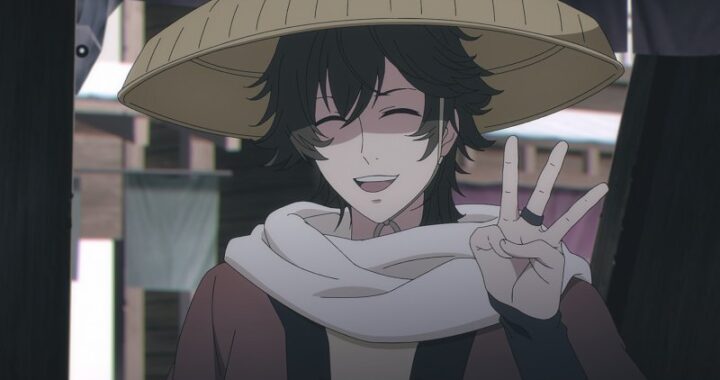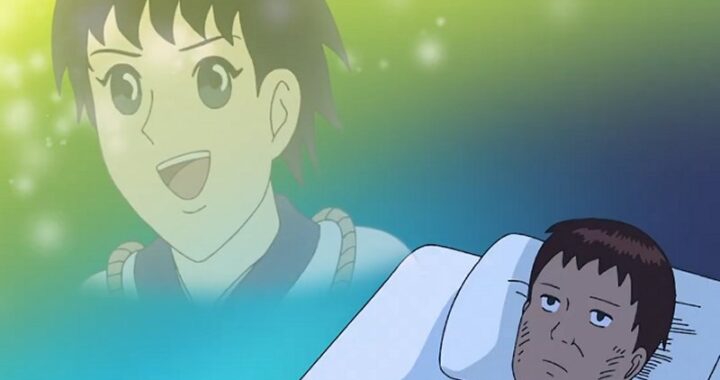 When I wrote my review of the Frieren: Beyond Journey’s End anime for its one-year anniversary, I declared it the greatest anime of all time and repeatedly attributed that achievement to its director Keiichiro Saito. In fact I named him “the single creator I’m most excited to follow.” So when Anime Central announced him as a guest, I immediately applied for a press badge, organized hotel accommodations with friends, and set price alerts for flights.
When I wrote my review of the Frieren: Beyond Journey’s End anime for its one-year anniversary, I declared it the greatest anime of all time and repeatedly attributed that achievement to its director Keiichiro Saito. In fact I named him “the single creator I’m most excited to follow.” So when Anime Central announced him as a guest, I immediately applied for a press badge, organized hotel accommodations with friends, and set price alerts for flights.
There’s no question that his work as the director of Frieren and Bocchi the Rock! was the focus of nearly everyone who asked him questions and got his autograph, but the circumstances surrounding his appearance were a bit different – specifically, he was at the convention as one representative of the Global Anime Challenge, a program which we’ll learn a bit more about through this interview
Alongside Saito in this context was one of his producers on Frieren, Takafumi Nakame, the calligrapher-turned-animator Kaoru Tanimoto, and regular Kinema Citrus contributor Mana Kudo. I absolutely could’ve spent another hour just digging into Saito’s career and philosophy for elevating his works to the level we’ve come to know, but I’m grateful to have the opportunity to speak with each of them and learn about their individual work as well as their inspiration to be part of this project.
There are many English-language websites that allow users to rate every anime they’ve seen and rank the highest rated among all users, and since the first season of Frieren aired, it has consistently been the highest rated anime of all time on almost all of those sites. Were you aware of your work being so frequently considered the greatest anime of all time, and what’s your reaction to that?
Keiichiro Saito: Yes, we’ve been aware of the reaction outside of Japan. All the production staff on the Japanese side is glad to see that. For Frieren, we’ve been very fortunate to have great production staff, and the original manga was also superb. Our staff put so much effort and care into the production. That’s how we were able to create such a great series. I don’t know if this can be repeated, but if we have really great staff, we can make something great. When I was in charge of the production of Frieren, I made myself stick to the basic rules of directing, the fundamentals. That’s how we were able to create something with such great quality. However, when you look at the anime industry, the overall quality has increased, and it’s getting better and better. So right now, Frieren is evaluated as the number one anime. However, I feel that something else could come along and surpass it one day. I think I’m ready for that, and I’m expecting it to happen.
Frieren season 2.
(laughs)
Saito: So of course I’m very happy to hear about these rankings, but at the same time, I’m not looking at it as something too important. What’s important for me is to follow that evolution of anime, to keep up with it and keep creating something new and great.
How has your production experience differed from working on Makoto Shinkai’s films to Mamoru Hosoda’s films to Saito-san’s Frieren?
Takafumi Nakame: When I got involved with each of these directors, I was in different positions, so I can’t really compare them, simply because I had different roles and different perspectives. All of these directors that you mentioned are all very different. They have different personalities and different preferences, so the way I work with them to make anime together is very different from one to another. With that in mind, let me try to answer this question very slightly, because I can’t explain everything in detail. For example, how Shinkai-san and Hosoda-san started out was very different. Shinkai-san comes from an indie, private kind of background while Hosoda-san started out as an animator. So there’s already a difference between the two. Because of that, what’s important for each of them is different. Their personalities and characteristics are very different too, which also influences their approach to production. But just taking that background itself, that makes a huge difference between the two of them. At the same time, they also have something in common, and that is aiming to create something great. All the production staff is putting in their effort, their life energy, into creating something good. So all of these directors have this very high awareness of dedicating everything that they can do to create great anime. Frieren is no exception. I love that kind of workplace, where people are doing their best to create something good.
You’ve done a great deal of key animation and have also done some animation direction. Do you have any ambitions to become a character designer or director?
Kaoru Tanimoto: Of course, one day I’d like to become a character designer or director. However, I don’t think that can happen anytime soon. I just have to keep working hard and wait until somebody offers me one of those roles. In the meantime, I think the experience I’m getting from GAC will probably contribute to my future too. So that’s what I’m doing right now, to gain more experience and expertise.
Can you tell me about Gift-o’-Animation’s role in the production process of Kinema Citrus?
Mana Kudo: Gift-o’-Animation was a part of Kinema Citrus whose aim was to train key animators to work with Kinema Citrus, specifically key animators who can produce a lot of work efficiently. That was the purpose of setting up Gift-o’-Animation. It was intended as a training institution, and it became independent. Now the company is 100% remote, for the animators who cannot go into the studio to work.
Why did you join the GAC?
Nakame: What motivated me to join GAC is that I thought it was doing something very new and interesting, and I also wanted to interact with people outside of Japan. Japanese anime is very popular around the world. However, there are a lot of issues at the same time, like training new, young animators. Some things are changing, but some things are the same as always. If you keep on doing the same thing, nothing will change. So I felt that I needed to take a different approach from others, to take on new challenges, and I feel that the GAC allows me to do something differently, and take that new approach.
Saito: After the production of Frieren ended, I just wanted to go outside of Japan. So together with Nakame-san, after Frieren was finished, we traveled overseas, feeling a great deal of freedom. Then I realized the importance of the English language. When I go outside of Japan, I feel that I should be able to communicate more freely, and you can have much more communication if you can speak English. By going overseas and interacting with people outside of Japan, or even visiting animation production studios overseas, I should be able to learn how they do it so I can take what I learned and bring it back to Japan, to integrate it into how I make animation. Just when I was talking about those things with Nakame-san, he told me about the GAC program. The timing was just so perfect that I just had to join.
Kudo: I’ve been working remotely, all by myself. I felt a great deal of solitude working alone, so I felt that I had to do something about that. At the same time, I wanted to go through some sort of training again. That’s when Ogasawara-san, the chairman of Kinema Citrus, told me about the GAC program, so I told him immediately that I wanted to participate in the program.
Tanimoto: I was interested in going overseas. We call it a working holiday, when we go overseas to work and also to spend time in another country. It only so happened that I heard about GAC through another participant, an animator named [Yuki] Ito-san.
Saito: All of our stories are that one thing led to another through random events like dinner parties. Where each of us was able to go or not able to go resulted in certain things happening to connect us to this program. It almost feels like a miracle that we each happened to hear about the program and were able to apply to it.
Nakame: The program itself is funded by the Japanese government. However, the call for applications was not all that clear or widespread among the industry. Only certain people in the industry knew about it, but because of the network that they have between different animators, the information got transferred from one person to another through word of mouth. So yes, like Saito-san said, it’s just that one thing led to another, and it’s a miracle that we’re all here.



